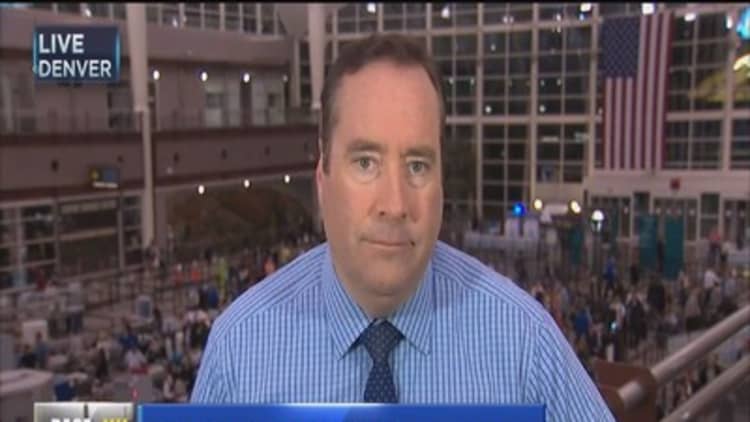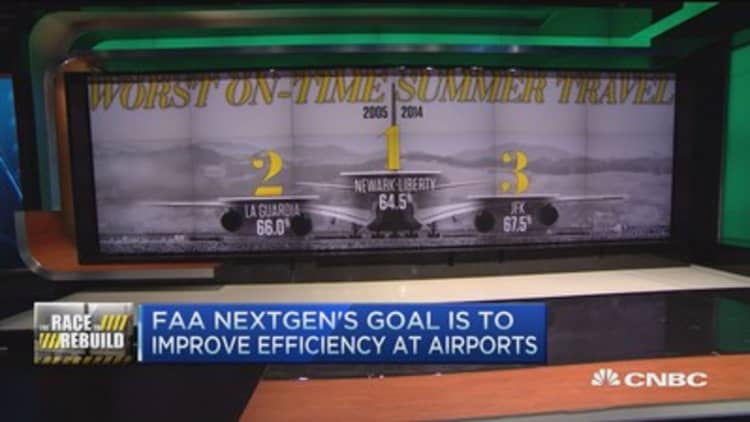
When Wichita State announced earlier this year that flier satisfaction in the U.S. dropped in four key areas, including on-time performance and mishandled bags, the collective reaction of the traveling public was a shrug of the shoulders.
Who can blame them? Flying in America has been bad for years.
Usually the frustration targets airlines, which without question play a role in the deterioration of customer satisfaction scores.
But two bigger culprits that many overlook are the country's aging airports and growing congestion in the skies.
"We need to have efficient airports, and if we make our current system efficient, we are going to have a much better system," said Michael Boyd, president of Boyd Group International, an aviation industry consulting firm.
We've all heard the complaints, so what's being done to fix some of the problems?
Clearing up congestion in the skies
Depending on your point of view, the NextGen technologies being implemented by the Federal Aviation Administration are either a long overdue answer to congestion in the skies, or a program that has taken far too long and delivered far too little.
NextGen consists of multiple GPS-based systems on the ground and in airplanes that will replace the traditional radar systems that have been used for years to track and route planes.
Read MoreAirfares see sharpest monthly decline in 20 years
With new systems in NextGen, planes should be able to fly closer together, burn less fuel and ease some of the congestion.

The FAA says many aspects of the systems have already been put in place. For example, a performance-based navigation system that allows planes to fly a more direct route between airports.
"What they're going to see is less time on the ground," said Michael Huerta, FAA administrator. "They're going to be quicker off the gate, quicker in the air for a smoother flight and an on-time arrival."
Although travelers may not think anything has changed, the agency said NextGen is smoothing out kinks in how airports handle flights.
But not everyone agrees with the progress the FAA is making. Earlier this year, the National Research Council blasted the agency in its push to modernize air travel, saying, "NextGen, as currently executed, is not broadly transformational."
America’s crumbling airports
When Vice President Joe Biden and New York Gov. Andrew Cuomo recently announced plans to tear down and completely rebuild New York City's LaGuardia Airport, millions who travel through the beaten-down facility—sometimes while maneuvering around buckets catching water from leaky ceilings—cheered.
"It comes with more flight operating space, which is key for LaGuardia because that is what has been causing a lot of the delays and limitations," Cuomo said.
Read MoreUS airlines group expects busy Labor Day travel
But aside from LaGuardia and a few new terminals being rebuilt or added at airports including Los Angeles International, John. F. Kennedy International and Fort Lauderdale-Hollywood International in Florida, America's airports are hurting.
In fact, Denver International Airport, constructed in 1995, is the last all-new airport built in the U.S.
But there's a case to be made for the government and private investors shelling out funds for new airports.
Criticized as too expensive and unnecessary 20 years ago, DIA now handles more than 53 million travelers every year and is the fifth busiest airport in the country.
"We are an economic engine for the region," said Kim Day, CEO of Denver International Airport. "We generate $26 billion a year into the economy. We have a dual purpose here. One is to serve our passengers and the other is to serve our community."
Although Day admitted landlocked airports may not be able to add runways, they can improve their facilities.
"Even with constrained land you can do things to improve the passenger experience," she said. "You can work with your airlines to bring your costs down so they give you the flight that you want."


